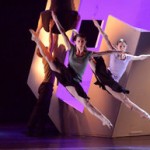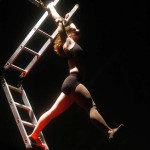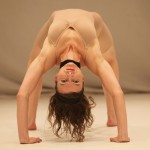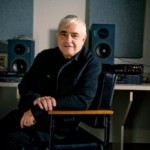July 9, 2012
For seven years I have lived in almost constant and often unbearable pain, undergone 7 root canals by four different dentists, had three teeth removed and two subsequent minor surgeries to grind down the jawbone when it dropped. The ordeal is still not over. I am in severe pain as I write and in the deepest debt of my life. Among the things that my Delta Dental PPO/Premier plan does not pay for is the anesthesia for tooth removal. They will only pay for anesthesia if two or more teeth are being extracted at once. Of course, you cannot do that without being extremely sure which teeth are infected. So I have put some $3,000 on my credit cards. Last week, a digital radiography showed some sort of irregularity in the form of two horizontal lines on the remaining back molar. Neither the doctor who took it nor the surgeon I went to could tell me what it could mean. I was told I would have to find a dentist and am trying to find one who will accept my insurance plan. This is the first part of the story. The rest will come later along with photos of the 36 different bottles of prescriptions I had filled. I need to be on an antibiotic right now. If I am and I feel better in a few days, then we may surmise that this is in fact still an infection.
I am in touch with another woman in Manayunk who has been suffering in the same way. Neither of us knows what to do.
1. Oct 4, 2005 Dr. Thomas Nordone, Dental Surgeon 207 N. Broad St seen Oct 4, 2005 for the pain. Takes Panorama. He says its neuralgia not dental. I had already been suffering for some time with a sinus infection. I insist it is dental and tell him about the time 30 years ago it took 2 years to find the two abscesses that were root canalled on the other side. He allowed as how that could be the case, but that he did not believe it and that all my symptoms pointed to neuralgia. I left reluctantly, asserting that all the symptoms could also point to abscess.
2. Oct. 12, 05 Dr. Kitai at Mazotti’s ofc, S. 9th Street, 215 334 4049 — puts me on Cipro in October, for sinus infection. As usual, I feel a bit better and have less pain when I am on antibiotic and fight to get on it long-term, but neither he nor any of the doctors will do that.
3. 11/22/05 Dr. Thomas Stern, DMD S. 833 2nd St, 215 336-3066 11/22 Stern takes full head x-ray – Panorama—he can see no dental problems. Confers with Nordone by phone. They are buddies and agree its neuralgia. Stern puts me on 100 mg Neurontin (gabapentin) to begin with and ups the dose a couple of weeks later when efficacy seems wearing off. I go onto 3,300 mg neurontin daily. Helps some, but makes me forgetful and unable to focus. Meanwhile, Stern has referred me to a neurologist, Dr. David Cook at Penna Hosp. Cook refuses to see me because he does not take United Healthcare and calls personally to tell me so. When I tell him I have just been on the phone for two hours getting an exemption that they will fax to him, he says, “I don’t care. I don’t know them and I won’t use it.” He does not offer to send me anywhere else or make any other suggestions. Later, Kitai also recommends him, but I tell Kitai what he said. By now the holidays are upon us, I am working and I am spending my spare time trying to find the right kind of neurologist that takes United.
Dec. 05 Stern confers with an internist friend and they put me on 30 mg prednisone daily on the hunch that I have a lingering inflammation from the sinusitis, and raise my neurontin levels to 2400 per day. I can only manage to get myself up to 1800 per day. Stomach bloats, dhiarrhea, eating like crazy to try to absorb meds, face is swollen and shifting, have to fight to drive, to work, to live. My editor at MetroKids is impatient with my medical calls and needs. Tells me to do that on my time.
4. Jan. 06/06 Stern insists this is neuralgia and says he understands my pain, that it is called the “suicide” disease because of that. I tell him that, indeed, at 4 in the morning I am often suicidal from the pain. I get up and walk with an icepack until I am exhausted enough to fall into sleep for a few hours.
5. 1/13/06 Finally, Dr. Stern gets me in to the neurology dept at Jeff. It turns out to be the wrong kind of neurologist (there are at least 15 kinds of sub-specialties) Tsao-Wei Liang, MD Asst Prof Movement disorders, I meet Tsao-Wei Liang, MD Asst Prof Movement disorders Neurology Jeff Hosp. 215-955-1234 & 215-955-1041.
First neurologist I have seen, at Jeff, since being on the Neurontin for 2 months. He sees me anyway because of all the trouble I’ve had and is very nice and seems thorough. He ordered MRI and it was done later that month. Shows nothing but some swelling on the right gland. He has been trying to get me into the headache center at Jeff to see Dr Wm Young. He did not know that the Headache Ctr has a blanket policy that each patient must be seen by their psychiatrist first. Their psychiatrist does not take health insurance and patients must pay $480 out of pocket up front. Liang requested an override from Dr. Young who agreed, but did not pass the info on to his secretary, Miriam Reigel, who insisted I would need to see the psychiatrist. When I informed her of the Doctors’ override, she said “Oh they withdrew that.” I said “Why, because I am angry?” she said “No, because as I told you it is our policy.” I told her the policy was outrageous and that it was up to the doctors and not her and hung up on her.
Dr. Liang adamantly denies that and said he would track it down. He did argue for me to be seen by a resident there and on Tues, 2/14 Miriam Reigel, the Headache secretary said I could go in on Thurs morning, 2/16 but that she would call back and tell me who I was to see. I called 3 times on Wed to find out who and where and Reigel never got back to me. Liang is trying to get that up for me again on Mon or Tues morning.
5. 2/16/06 Dr. Stern is very angry when he hears of what Jefferson Headache Ctr did. He calls all over the city until he gets me in to see Daniel Feinberg, Penna Hosp Neurologist Seen Friday, 2/17
6. 2/17/06 215 829 6500: Feinberg says it is not neurological but could be Trigeminal neuralgia and Sinusitis, but thinks it is still just sinus-involved. Feinberg took me off the Prednisone and recommended I stay on 1800 mg Neuronton until I see Maria Mazzotti, DO, for the sinusitis. I told him Mazotti is not competent enough to handle all these complications and that I would also arrange to see my ENT man, Dr. James Kearney, at Pa Hosp. Feinberg agreed, then, that that would be a good idea. I arranged appointment with Kearney on March 8, 9:15 am
7. 2/17/06 Since Kearney’s appt. was so far away, I also called and spoke to Maria Mazzotti on 2/17. She set me an appt for 2/20, 11:45 and said she would call in a 7-day course of antibiotic for me to start over the weekend. I argued that would not be long enough but she would not budge. Either she did not call it in or the pharmacy lied because when I went to pick it up they did not have. It was a Friday and I have a total meltdown right there in the store. I finally reached Dr. Bralow, Mazzotti’s wknd sub and Bralow called in a scrip for me. Walgreen’s says they will call when it is ready. By then I have fever, feeling weak and the stuff is traveling down into my chest. Pain in face very bad. Taking Oxycodone a lot. Feeling a bit better, as usual when I finally get on antibiotic. Telling them all I have some sort of systemic infection.
Fly out to Phoenix 2/23 back to Philly March 7 for my March 8 Appt. with Kearney
Mar 7, Pain severe as usual. Go to Mazotti. Insist on blood test. Have lab results on that. She says they show nothing.
Mar 8, 06 Kearney goes into my sinuses, sees what he interprets as a cyst on my left maxillary sinus. Says that alone would not cause the kind of pain I am having. Puts me on another antibiotic.
Mar. 28 06 Back to Kearney, with my friend Malgosia as my patient advocate and witness and also, I am unable to drive. I ask him to take out the cyst.
Mar 31,06 7 am surgery to remove the “cyst” It turns out not to be a cyst, but a POLYP, which they remove and biopsy. Biopsy OK.
Three followup checkups until April when I leave again for Phoenix.
Apr 24, 06 Pain is relieved quite a bit but still strong enough to warrant painkillers. I go first around May 5 to the Scottsdale Pain Center and for a cursory, ten minute, hands-off exam with the director @ $600.00! I am directed to Dr. Joseph Cohen at Southwest Pain Management Associates. 602-992-1486 Cohen’s x-ray machine is out-of-order but he diagnosis TMJ and fits me for mouth guard. Does a Tomography at a later date – cannot see dental problem. Says it is classic low-grade TMJ and does not understand why the other doctors I saw diagnosed neuralgia.
6/12/06 Today saw Cohen’s Physical Therapist Robin Bedingfield (602-494-1548) for first time. She checks with my insurance to be sure they will cover me. (Remember this as the punch line comes later.) Says I have a lot of capsular inflammation (every joint is surrounded by a capsule of fluid and the fluid swollen and affecting the cheek muscles. She says I must clench, and that the mouth piece I get on Friday will help a lot. She did electric stim and ultrasound. I’ll see her about 5 times before I leave. She teaches me some mouth exercises
July 2.06 last session with Robin. Things are somewhat better, but still taking lots of Oxy.
Jul 5.06 I leave for Philly
8/30/06 I go to Dr Stiles, 909 Walnut Street. 3rd Floor (he is Dr. Joseph Cohen’s “protégé” in Philadelphia) for a checkup and adjustment for my mouthguard. He recommends continuing the mouth exercises, otherwise he will give me an injection in the Trigeminal nerve.
Sept 30 to Oct 15 06 to Phoenix using mouth guard, doing excercises, pain is bearable on two to three Aleve per day and hydrocodone at night. The mouth guard is unbearable.
Late Oct, 06 pain ramps up – go to see Stiles.
Oct 31 Tell him it’s an abcessed tooth. I’ve had a dozen of them and I know the pain when I feel it!!!! and insist on another xray. He says no, and suggests I go on Flexeril so as not to clamp at night. He says I can take it with Oxycodone which I am taking at night. Use it for two weeks. There is minor improvement.
Insist on xray, this time he does it but says he does not see anything. I am having low-grade fever. My normal temp is 97.5, its hovering around 99.
Nov. 17, 06 Scheduled to meet my husband in Chicago for the weekend where he is giving a paper, but have to cancel — don’t trust myself to travel.
Nov. 21, 06 My husband Arthur, flies home to Philly. I have to ask a friend to get him at airport, too drugged to drive. We cancel Thanksgiving at our house because I’m too sick.
Dec. 14 Arthur flew back to Philly last night for the holiday and took me back to Kearney to see if I have a sinus infection. Kearney can’t see me but his partner Newman does and does the camera thing in my sinuses. Says he sees mucous and puts me on a two week course of Avelox and recommends a daily sinus rinse which clears out a lot of guck. Pluera all through my back behind lungs, kidneys, very painful. I am so sick I cannot even get up to go out for Christmas and New Year’s but the pain in my mouth is lessened. Christmas week throwing out/giving away hundreds of dollars worth of food for the parties I usually give. Freezing my cookie doughs because I cannot standup to bake them. Arthur and my daughter take over and somehow we put together our Wigilia supper for 12 people – don’t know how – all a drugged blur. I cry a lot over missing my second Christmas in a row. Who knows how much energy I will have in years to come to get my Christmases back. So much work that I love, so many people that I missed, so many invitations declined, parties canceled, could not even send out a single card, could not play with my grandson or babysit. Somehow managed to get out a lot of dazed writing – all hack work, but I’ll get paid and I performed a service to the community. Something.
Dec. 26 See Newman again – sinuses are clear he gave me a scrip for 40 oxycodone for the pain and shrugs it off “I don’t know anything about teeth.”
Dec 27, 06 Pain very bad. go to Stiles again, with Arthur. He gives us an hour and his THEORY that this is a Migraine that has migrated to my mouth. Draws diagrams, etc He’s writing a paper on new findings and treatment for migraine pain.
Dec 29 06 – call Stiles in agony. He puts me on Nortriptiline. Says it will take a few weeks to work!!!
Dec 30 06 Dinner with friends Dr. Gil and Elaine at Pif. I order what seems soft to eat – snails and duck breast on pureed parsnips. Only able to eat the snails and parsnips, duck too hard to chew. Gil tells me the nortriptiline is to raise my threshold for pain. At home I freeze the leg of lamb I had planned to make for them but was was too sick to do and cry bitterly. Poor Arthur has taken such good care of me all this time. But its been a difficult return home for him. We haven’t even been able to sleep together all these weeks.
Jan 2 07 – call Stiles “I do not want to have my pain threshold raised. Pain is there for a reason: to tell you something is wrong. You had mentioned a dentist you would send me to if you thought it necessary. Who is that? I want to be sent there now.” He tells me he’ll give me Patrice Ierrardi’s number at the Bourse. But I say, “Oh no, you’ve been treating me unsuccessfully for three months and I’m in too much pain to call her. You get me in there and my husband will take me. I go to her.
Jan 3 07 She has something called digital radiography and insists that if there is something to be found, she will find it. I wait 5 minutes in tears. She finds the two abcesses in the third molar RIGHT WHERE I LOCATED THE PAIN ALL ALONG!!!! and explains how the silver tips on the tooth (treated 30 yrs ago) deteriorated. She says the only place I could have this retreated in Philadelphia is up at Einstein where they have a hospital setting and can work with the ENT Dept should that be necessary. I agree to go there though I know nothing about it and cannot find out much through the girls at the desk who make me feel like I’m going to some sort of clinic.
Jan 5 07 treated by Dr. Michael Trudeau. He does not use any sort of IV Valium, laughing gas or other sedative that I am used to having with major procedures like root canals or extractions but on my insistence he prescribes two Xanax to take before I come in. I undergo a 3 1/2 hour surgery with doctors coming in from all over to observe. Expecting that I will feel better within a few days, I do not.
Trudeau has inserted anti-microbial material and says my infections are so bad, it could take up to two weeks to work. The pain will be bad — QUELLE understatement! But begs me to persevere. Finally after 14 days of agony, the pain just drains away on Jan 20. I stop taking Oxy or anything else and have not taken a pain killer since. Trudeau did the second treatment Mar 8 and I have been completely healthy – no fevers, no sinus infections, no pain ever since! The only thing lagging is my energy and losing all the weight I gained on the Neurontin and Prednisone.
Until…
But we pause here for a brief informational message on a road not pursued in this case:
Osteonecrosis can affect any bone, but the hips, knees and jaws are most often involved. Pain can often be severe, especially if teeth and/or a branch of the trigeminal nerve is involved, but many patients do not experience pain, at least in the earlier stages. When severe facial pain is involved, the term NICO, for Neuralgia-inducing cavitational osteonecrosis, is frequently used.
ONJ, even in its mild or minor forms, creates a marrow environment that is conducive to bacterial growth. Since many individuals have low-grade infections of the teeth and gums, this probably is one of the major mechanisms by which the marrow blood flow problem can worsen; any local infection / inflammation will cause increased pressures and clotting in the area involved. No other bones have this mechanism as a major risk factor for osteonecrosis. A wide variety of bacteria have been cultured from ONJ lesions. Typically, they are the same microorganisms as those found in periodontitis or devitalized teeth. However, according to special staining of biopsied tissues, bacterial elements are rarely found in large numbers. So while ONJ is not primarily an infection, many cases have a secondary, very low-level of bacterial infection and chronic non-suppurative osteomyelitis can be associated with ONJ.




